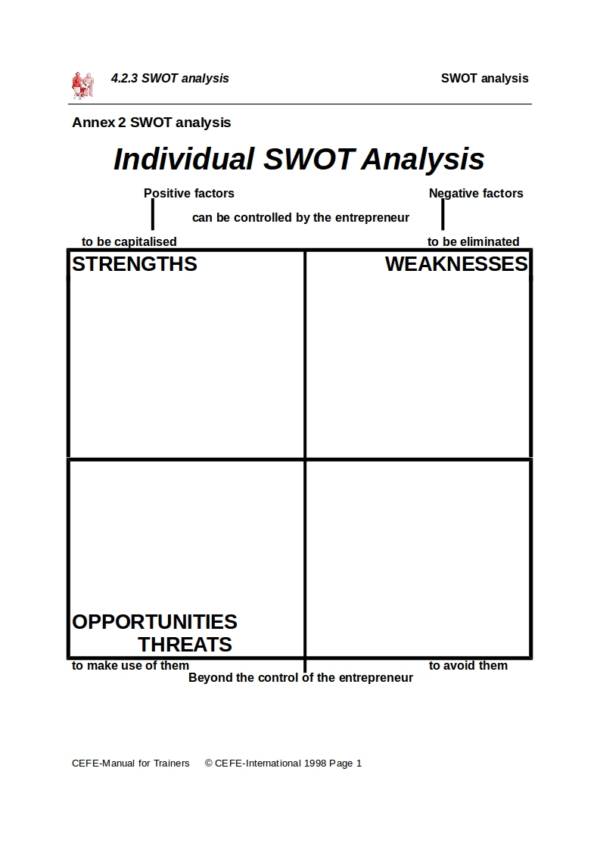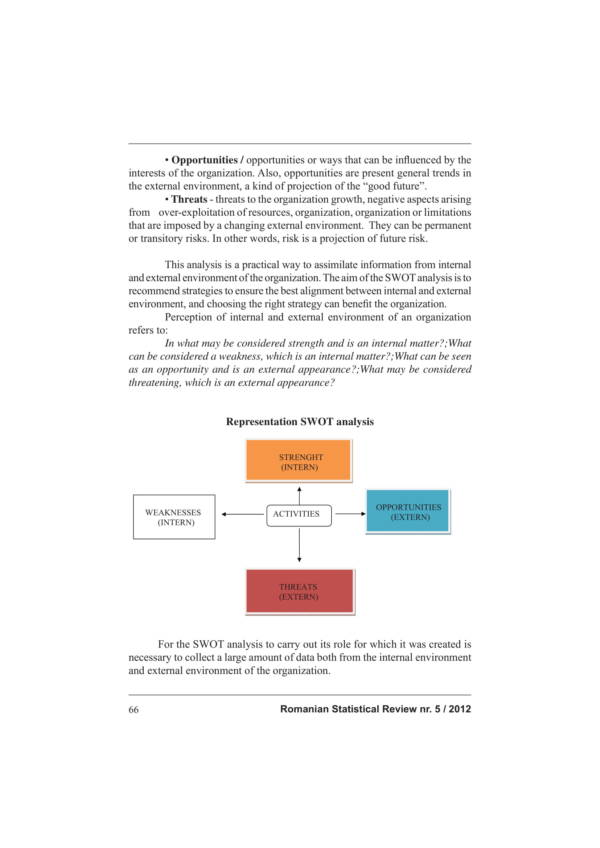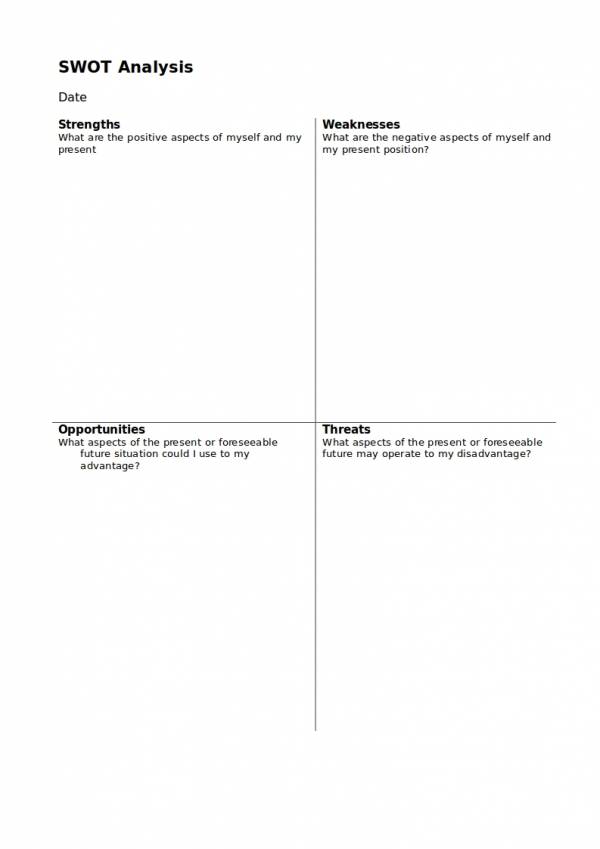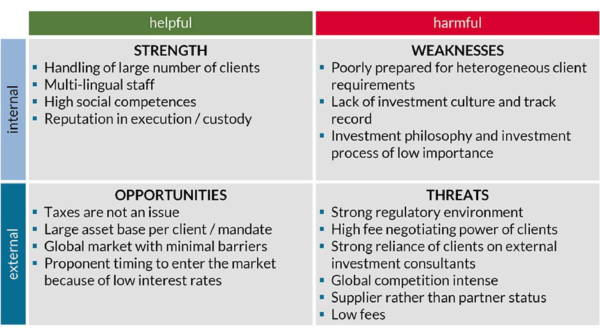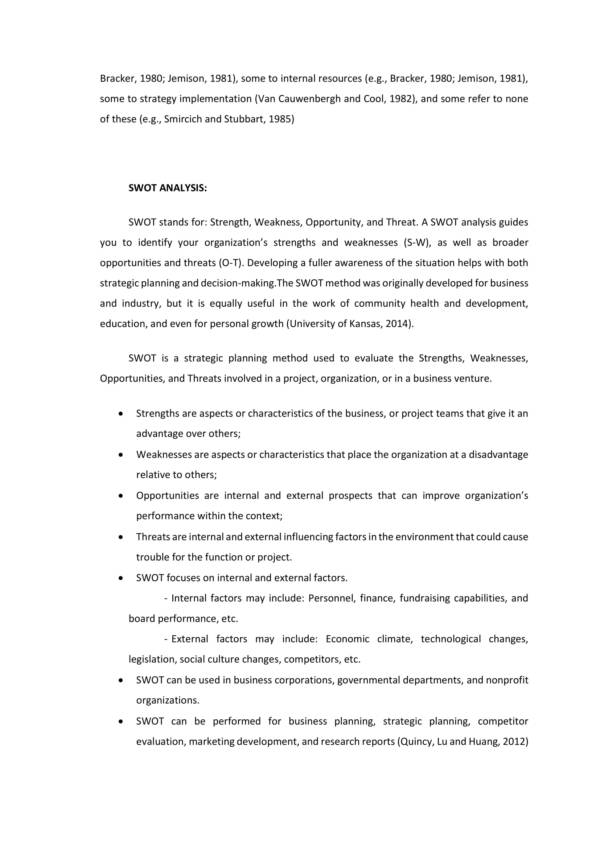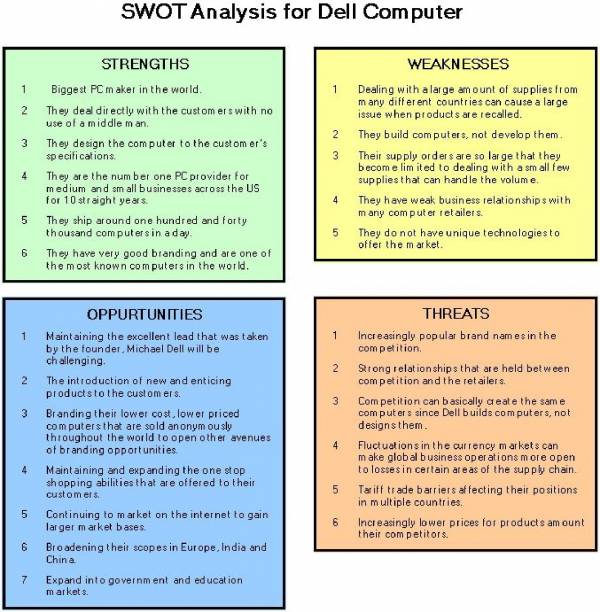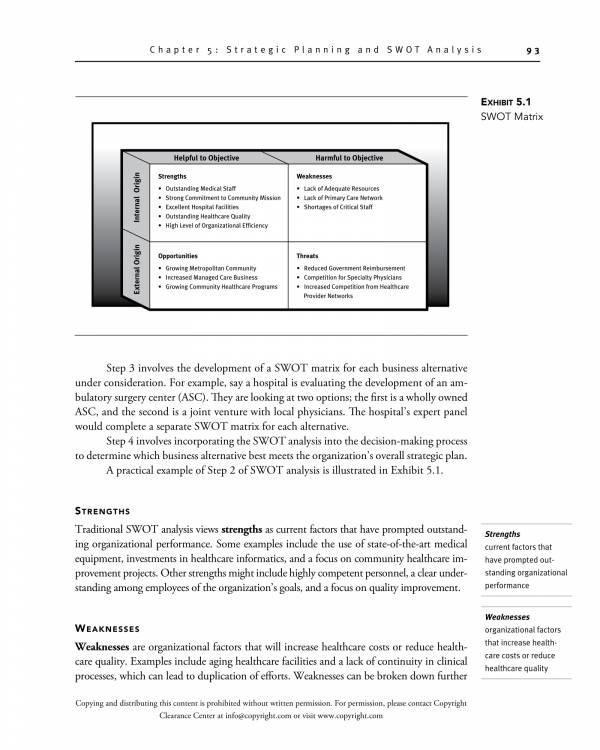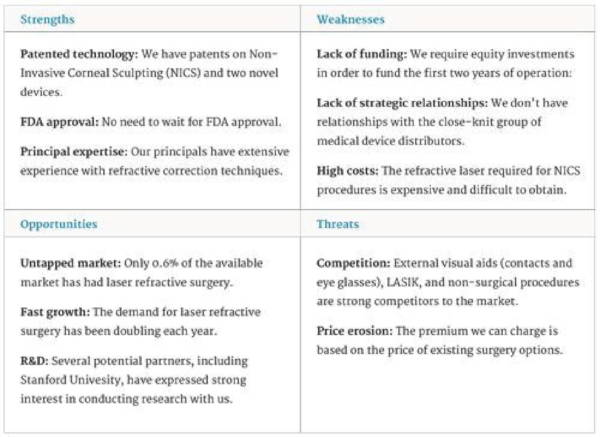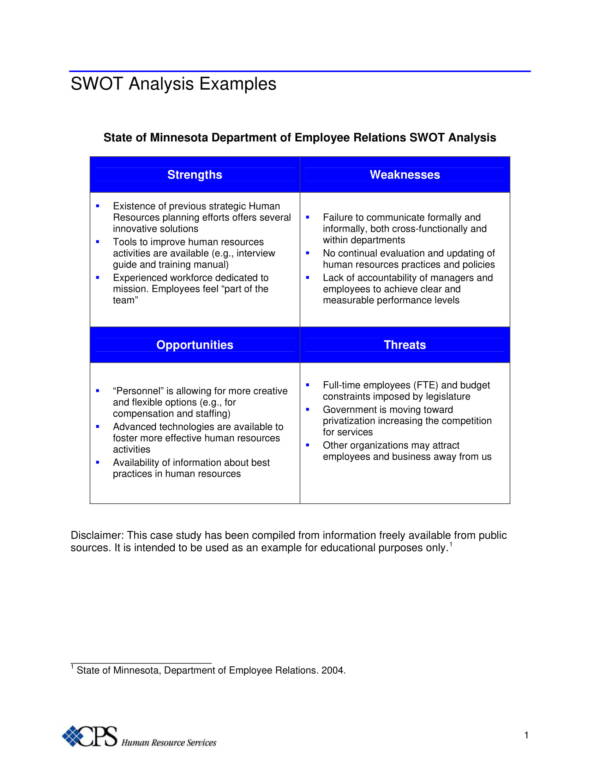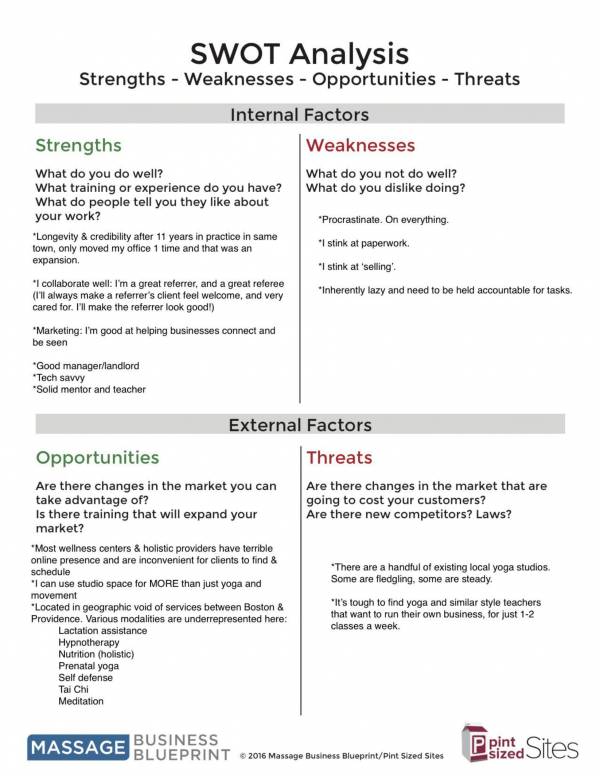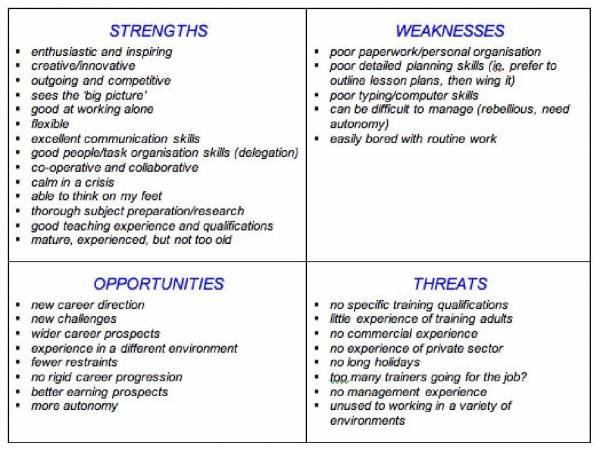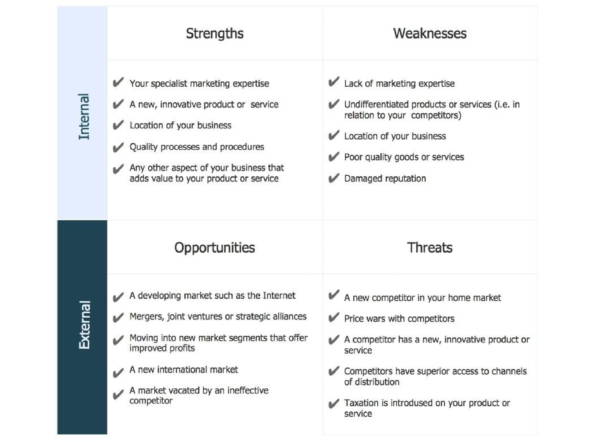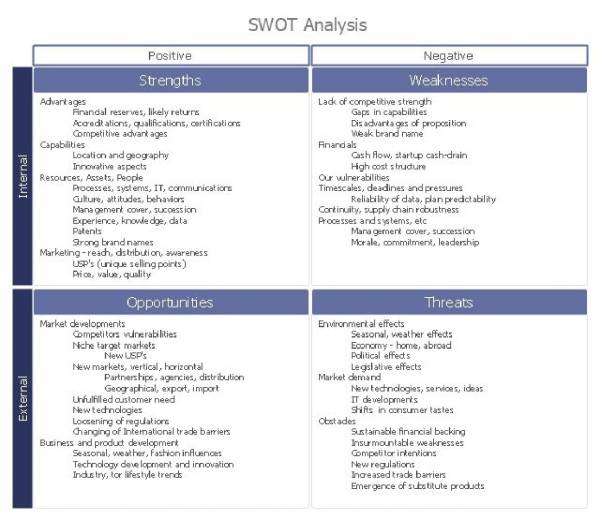Managers play an important role in a business or organization as they are responsible for making sure that directives from higher management, as well as the goals and objectives of the company or organization are met. Managers take care of or handle a larger group of people compared to that of supervisors or team leaders. The efficiency of each team under their management greatly depends on the plans they have laid out for their team.
One of the many tools that managers need to use to mage their whole team or realize the best way to mange their team is a SWOT analysis. A SWOT analysis is an indispensable tool that will offer them a lot of advantages and benefits. It is easier done and used compared to other management and assessment tools. Below are some manager SWOT analysis samples and templates that you can use personally or for reference. Feel free to browse through them.
Manager SWOT Analysis Sample
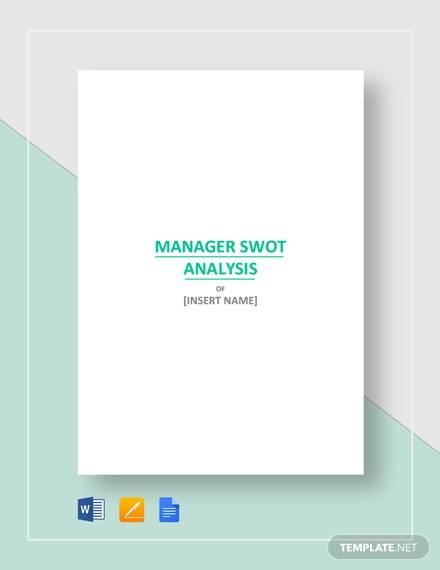
Printable Manager SWOT Analysis
SWOT Analysis Management Template
Standard Manager SWOT Analysis
Basic Manager SWOT Analysis Sample
Strategic Management SWOT Analysis Template
Dell Manager SWOT Analysis Sample
SWOT Analysis & Strategic Planning
Uses of a Swot Analysis
A SWOT analysis has proven itself to be useful in different fields and in the business industry. It has been a very useful tool since it was created back in the 1960s. The main reason why it was created was to identify and find the reason why corporate planning failed. From then on, its uses grew in number and it has been used for a variety of reasons. The following is a list of some of its uses.
- SWOT is an acronym that stands for strengths, weakness, opportunities and threats. It is used to gather data about these four components that are later on analyzed in order to create a strategic plan or a marketing plan for a business.
- A SWOT analysis is used as a basis for making important company or business decisions.
- A SWOT analysis used to analyze one’s own strengths, weaknesses, opportunities and threats can help one realize what they are capable of and use it to their advantage.
- It is also used to analyze or decide on an investment opportunity, in marketing, in research reports, etc.
- A SWOT analysis is used by profit-seeking organizations or businesses to be able to create strategies or ways that will help them earn more than they usually do.
- Another wonderful use of a SWOT analysis, aside from determining one’s strengths, weakness, opportunities and threats is, is matching and converting each of the SWOT components so that they can be seen as advantages instead of disadvantages.
- One of the easiest and most effective ways of creating a marketing strategy is with the use of a SWOT analysis. Not only can you create an analysis for own business, but you can also do so with your competitors and the current trends in the business industry.
- A SWOT analysis is also an important tool that is used in corporate planning.
A SWOT analysis is truly useful. There are specific types of SWOT analysis that are being used today and we have a range of different articles about them, like HR SWOT Analysis Samples & Templates, Hotel SWOT Analysis Samples & Templates, and Retail SWOT Analysis Samples &Templates. You may check them out on our website including other relate articles.
Simple Manager SWOT Analysis Sample
Manager SWOT Analysis Example
Sample Manager SWOT Analysis Worksheet
Multipurpose SWOT Analysis Example
New Manager SWOT Analysis
Manager SWOT Analysis Diagram
Manager SWOT Analysis Matrix
How to Conduct a SWOT Analysis
Now that you know what a SWOT analysis is, it is time to put it to the test by conducting a SWOT analysis. What you need to do to conduct a SWOT analysis are pretty simple. Just the steps provided below to learn how.
- First, you need to determine the purpose and objectives for conducting a SWOT analysis. This will make it easy for you to determine which information to gather and which ones are important or useful for your specific cause.
- Once you have decided and set a specific objective, the next thing you should do is conduct a research about your business, the industry it belongs to and the market where you will be doing business with. All these are essential information that will help you prepare for the actual analysis. Also include in your research important details about your competitors.
- Now that you have all the preparations complete, it’s time to work on the actual data or information that you will need to do a SWOT analysis. Start with gathering information or listing the strengths of your company or business. Your strengths can be anything that you think is something you have an advantage on, like financial resources, location of your business, the products you carry, the excellent customer service provided by your employees, etc. In this part, you don’t have to worry about what you should list down. Just list as many as you can. You can prioritize or filter them out later.
- Next, make a list of the weaknesses of your business. What are these weaknesses? They are anything that your company or business lacks. Some examples are employees with no experience, employees without any training, the location of the business, employee absenteeism, unsteady supply of certain products, lack of a certain product in the market, etc.
- After listing all of your weaknesses, it is time to move on to listing the opportunities that are open to your company or business. What are these opportunities? It could be anything that you as something that can help your business improve or become better. Examples are using new technology, introducing a new product, change in business management, business expansion and providing employee training.
- When your list of opportunities is complete, proceed with making a list of the things that you see as a threat to your business or company. They can either be internal or external threats, like increasing interest rates, inconsistent supply of certain products, high attrition rate, etc.
- After listing all four (strengths, weakness, opportunities and threats) you will now have four lists. This time, you will need to prioritize your list according to how important and related they are to your company or business. Put your list side-by-side so it will be easy for you to analyze them.
- Based on the information that you have gathered and after you have prioritized them, it is time for you to analyze or create a strategy that will best help you address business issues or problems. Create a list of questions to serve your guide for analyzing and setting a strategy.
- Before presenting your SWOT analysis to other members of company, make sure that you have properly proofread and edited it. Having grammar lapses and spelling may cause you some embarrassment.
Don’t you find these steps simple? Using these simple steps can help you conduct an effective SWOT analysis that will be useful for your company or business. You can also learn more about SWOT analysis through other related articles that we offer, like Detailed SWOT Analysis Samples & Templates, Hospital SWOT Analysis Samples & Templates, and Restaurant SWOT Analysis Samples & Templates. You can check them out all out on our website anytime you want!
Related Posts
FREE 10+ Fishbone Root Cause Analysis Samples in PDF
FREE 11+ Cost Volume Profit Analysis Samples & Templates in PDF | MS Word
FREE 6+ Corporate Portfolio Analysis Samples in PDF
FREE 10+ Fault Tree Analysis Samples in PDF
FREE 10+ Comp Analysis Samples in PDF
FREE 10+ Fishbone Analysis Samples in PDF
FREE 10+ Individual Swot Analysis Samples in PDF
FREE 10+ 5 Year Analysis Samples in PDF
FREE 10+ Benefit Costs Analysis Samples in PDF
FREE 10+ Job Hazard Analysis Samples in PDF
FREE 10+ Primary Source Analysis Samples in PDF
FREE 10+ Critical Path Analysis Samples in PDF
FREE 10+ Competition Analysis Samples in PDF
FREE 10+ Activity Hazard Analysis Samples in PDF
FREE 10+ Risk Benefit Analysis Samples in PDF

